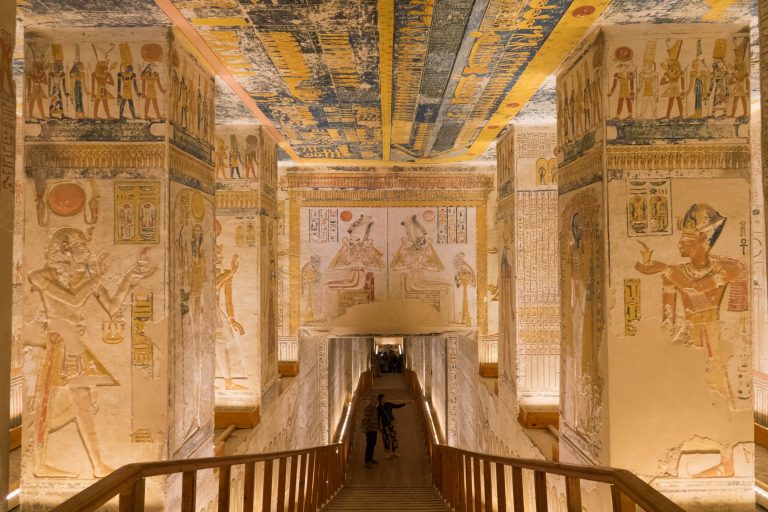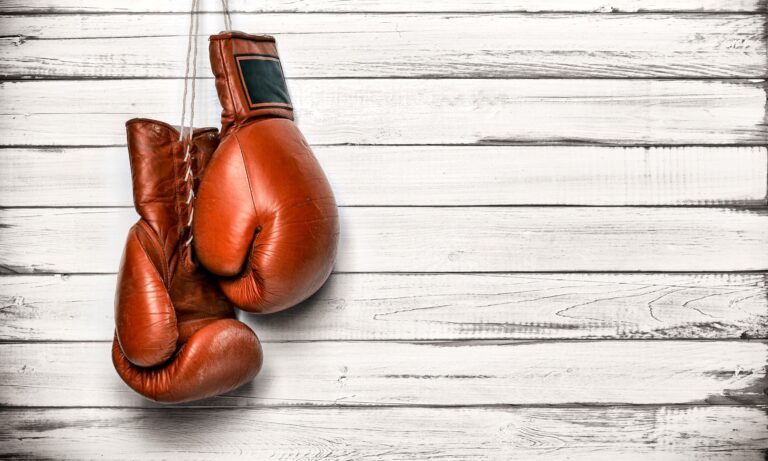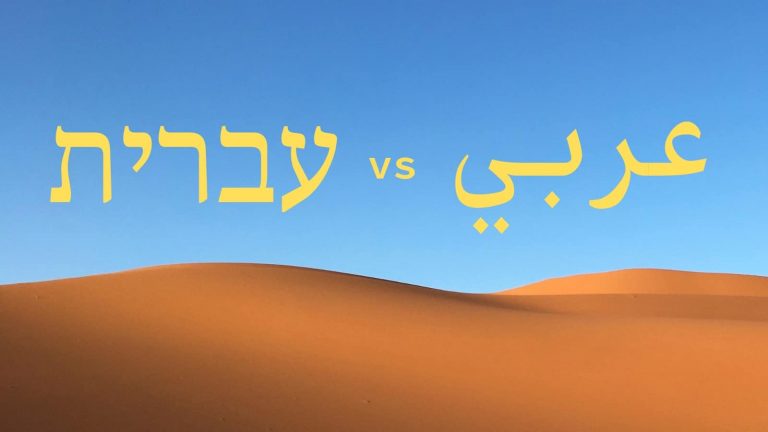Vera Fight Club: Boxing and Jiu Jitsu at Pitbull Dojo in Buenos Aires, Argentina
The winds of fate and fortune brought me to Francisco Vera’s “Vera Fight Club”. And from my first class, I knew three things: 1. I was going to learn a lot there, 2. I was going to miss it like crazy, and 3. I’d be back.
Oh, and one more thing. 4. I liked this guy, Francisco. I could tell we’d be friends. (And we are!)
For three months, I trained in combat sports at Pitbull Dojo in Buenos Aires, Argentina. I trained mostly with Francisco Vera and a bunch of other guys “roughly my age” (let’s say 30-50, with some outliers either way) at his morning group, the “Vera Fight Club”. But I also did some of the evening sessions with Martin Palacio, the “Pitbull” (I presume) himself, as well as with one of his other brown belts.
As I’ve tried many fighting sports gyms and trained medium-term in six so far (including trials at a couple of others around Buenos Aires), I’ve learned quickly about what makes a good martial arts gym for me and what doesn’t.
Suffice it to say that Vera Fight Club / Pitbull Dojo is not the biggest, nor the fanciest, nor the most aesthetic. But its little group of weekday fight club members, led by the indomitable* Francisco Vera (who goes by “Fran”) on weekday mornings, won me over very quickly and etched itself into my heart, and I’ll miss it dearly.
Here’s my full review of training at Fran’s “Vera Fight Club”, held at Pitbull Dojo.
* Indomitable except that one time when nobody was watching. But I probably got lucky. But it was awesome!
Here are my latest posts on combat sports gym reviews from around the world, vocabulary for training in other languages, and other resources. If you’d like to have me visit and see your gym, please contact me — I love visiting new places and making new friends through combat sports.
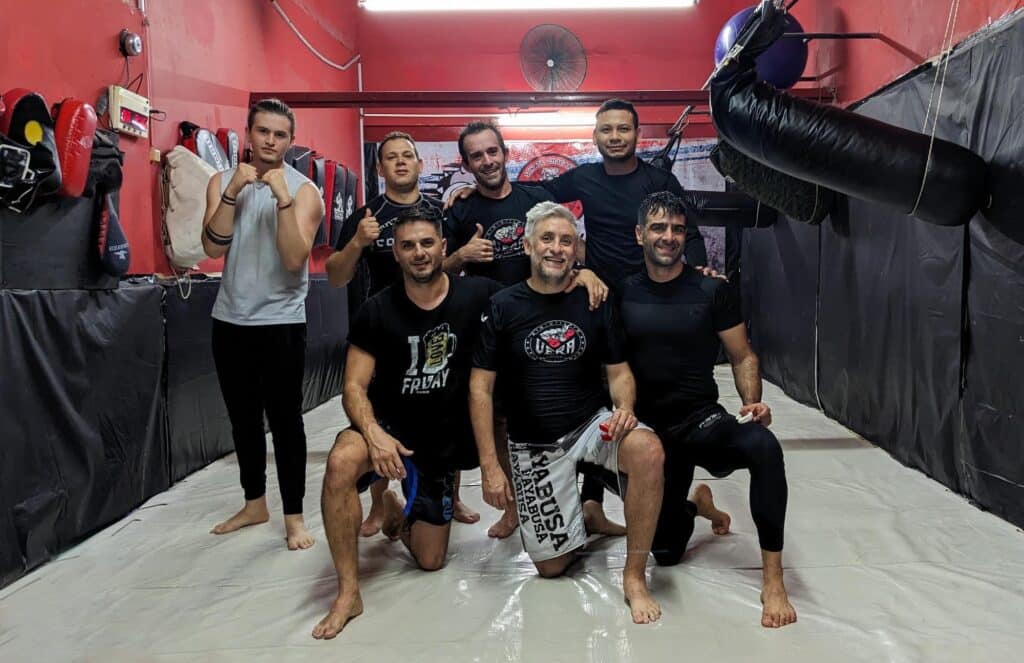
Overview of Vera Fight Club / Pitbull Dojo
Wait, what’s this gym called, anyway? I see various names all over the place, including on posters inside. I wasn’t sure, so I had to ask the owner of the club — Fran.
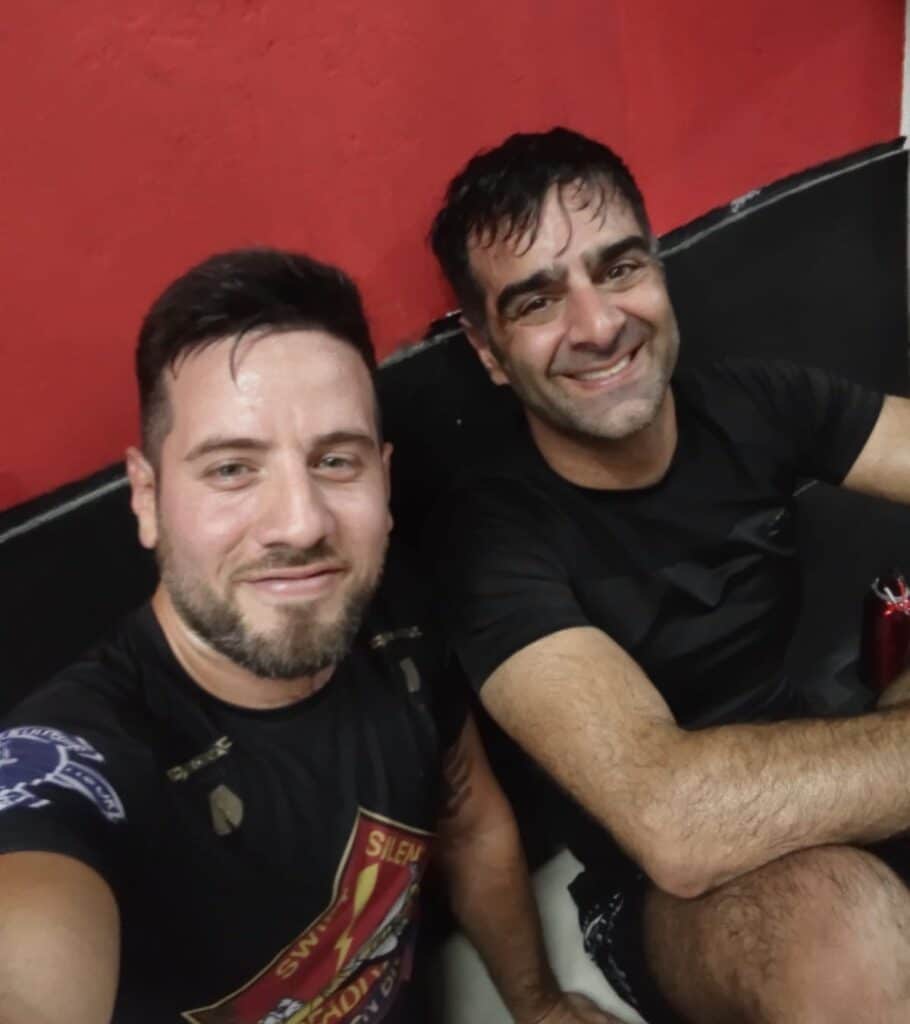
Fran calls his little club Vera Fight Club, after his own last name (and not after the nearby street of the same name!). But it’s part of the bigger Pitbull Dojo, which has existed for many years, and where Fran did his jiu jitsu training. Pitbull Dojo is itself part of the Sukata Brothers network. I lose track at that point.
The owner of Pitbull Dojo is a guy named Martin Palacio, affectionately called “El Pala” by those who know him. Martin is, I gathered, the pitbull after whom the dojo is named; he’s a compact ball of pure muscle. His sparring blows are like nuclear bombs, and that’s when he’s being nice (which he is unless you don’t want him to be). I’ve heard he’s a monster in the gi, as well, but I never did jiu jitsu with him directly.
“El Pala” is, I hear, extremely well-known in the Buenos Aires martial arts / jiu jitsu community. He seems like it to me, but I’m such a beginner in comparison that I’m not in a capacity to judge. All I know is that he was very welcoming to me, as a foreigner, and provided helpful tips in whatever we were doing — even if he just happened to notice something I was doing, in a class he wasn’t leading.
When I first texted Martin Palacio, I asked about morning classes. He told me to get in touch with Francisco for his morning classes. There, he told me, I could do no-gi Jiu Jitsu, boxing, and some other stuff if I liked.
Pitbull Dojo is in the CABA area, just inland of the Palermo district. Here’s its Google Maps location. There’s information on their Instagram as well as on their website, but really, I’d just text the phone number on Google Maps for more information. Generally speaking, they have classes on every evening, and they currently have stuff on Mondays, Wednesdays, and Fridays in the daytime.
About Francisco Vera (henceforth “Fran”): Fran’s a bit younger than me (in his 30s somewhere), but has been boxing for decades and actually has trained in being a boxing trainer. He has a brown belt in Jiu Jitsu, which he’s had for three years… total grappling experience of 11 years or so as of 2023. He’s also currently doing a masters degree in management.
Belts and career aside, Fran has no trouble submitting me multiple times in a round, despite being a little smaller than me (though about the same weight) and generally moving fluidly without forcing anything, which is all I need to know “I can learn a lot from this guy”.
First Impressions of Vera Fight Club
I was really surprised with how effective the intake was at Vera Fight Club. I’ve never seen this.
For my first class — before I even paid! — Fran sat me down and asked me about my level and goals, both in strength and fitness training and in grappling and boxing.
I told him I used to be stronger, that I was terrible at boxing, and that I was just OK at Jiu Jitsu. I wasn’t planning on doing weights, but then I saw they had a squat rack and a decent number of bars, and I thought why not get some of my strength back up to a respectable minimum. I used to be at a 1000 lb+ weightlifting total, but that was difficult to attain and sustain.
Despite Fran’s surprise that instead of a petite girl named Dana he was met by a large Australian with relatively high weightlifting numbers (I didn’t learn he was surprised until later!), Fran quickly worked out a monthly training program for me and sent it to me. It was a custom strength and conditioning program. Again, this is before I even paid. I’m not sure this would be sustainable in a big gym, but I loved it.
In terms of striking and grappling, Fran also did an assessment of my ability on the first day. We sparred a couple of times in both jiu jitsu and boxing. He took note of my specific strengths and weaknesses as well as my level, and we talked about things that would help me. Awesome!
One curious bit, by the way, was that when I told Fran that I had a blue belt in jiu jitsu, he tactfully asked if I had procured it online. I think that’s a thing that happens sometimes — people do a course, and are told they get a blue belt as a result, even with no practise. This is why I think it’s totally reasonable to have formal grading requirements.
Finally, as part of the welcome, Fran asked me “¿Vos sos matero?”, i.e. “Do you drink mate?”
Pronounced “matt-eh”, mate is a slightly bitter stimulating leafy drink that Argentinians have almost an unreasonable addiction to for something that’s not a drug.
I hadn’t at the time acquired much of a taste for it, but this question inspired me. Anyway, Fran informed me that mate was provided freely by the club.
Deal. That was all I needed to join!
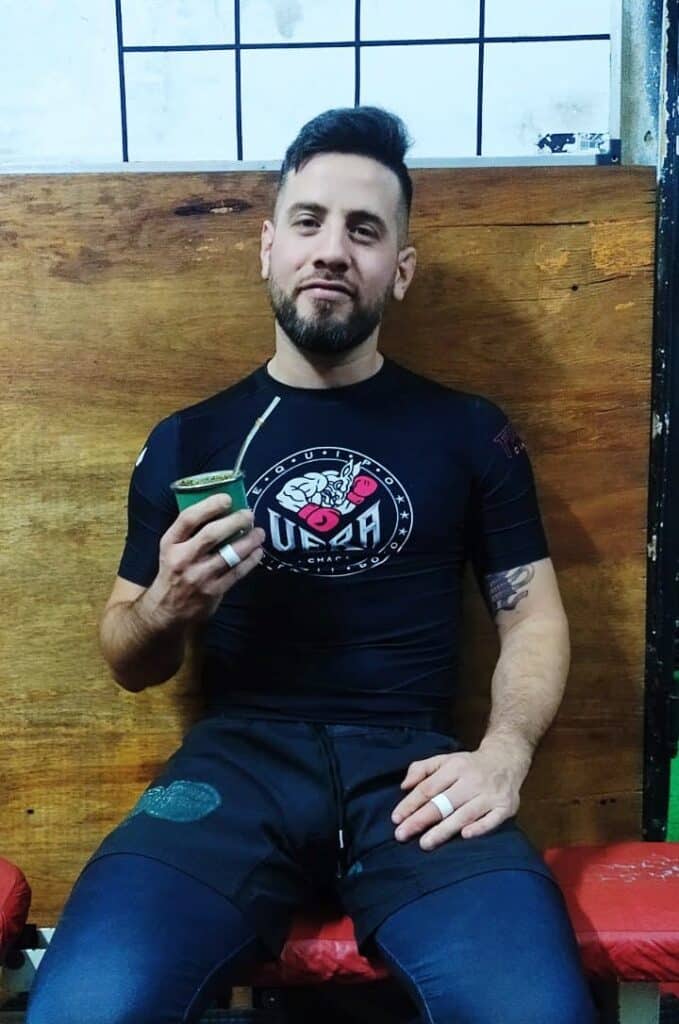
See here for everything you need to know to begin your deep, dark descent into mate obsession.
Culture and Community
If there’s one thing that stands out about Vera Fight Club, it’s the community.
Community in any gym is both top-down and bottom-up. It starts with a coach who brings in members who have good attitude — humility, an attitude of learning, and positivity — and it continues with members showing that attitude to other people.
In all the fighting gyms I’ve been to, I haven’t seen as consistently good a community as at Vera Fight Club. To a person, everyone that I met was welcoming, enthusiastic, and positive.
Fighting sports gyms generally can be measured on two axes. One of them is how serious they are as competitive gyms. The second is how good the community is.
In terms of competition — none of the people I was training with (during the day) was a competitor. Fran was at one point, but he put that to one side. Most of the other members were mostly (but not all) thirty years old and above, with jobs and kids, and just weren’t interested in showing their worth in a ring. One member was a boxer, and he does put that to the test occasionally.
“El Pala” himself was a competitor, and he has trained many competitors. So the evening and other classes do have competitive Jiu Jitsu players. But I didn’t go to many of those classes (only four or five in total) so I don’t know much about it. They were good, though.
In terms of community, Vera Fight Club stood out as a place where I made more and better friends than any other club I’ve trained at for such a short period.
Yes, I’ve made friends at other places. But somehow, they didn’t seem as intimate. At Fran’s fighting sports club, I was invited to drinks, dinners, coffees, my first Argentinian asado, and even to a goodbye dinner in my honor.
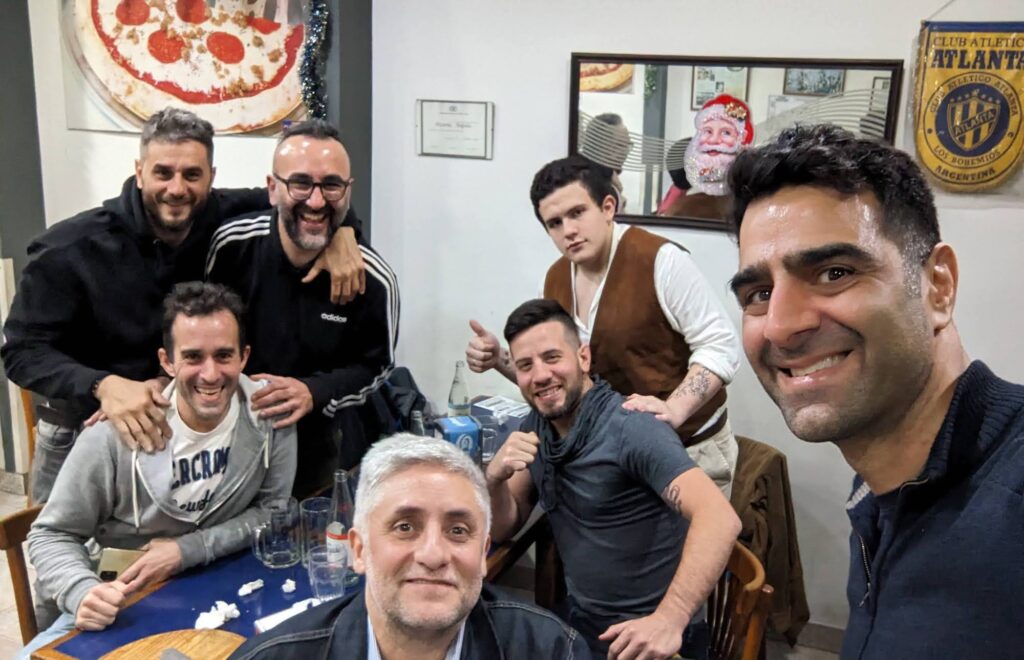
This was all despite the fact that there was a language barrier between us — my Spanish is good enough to understand when people speak to me directly, but when people speak with each other and start using a lot of slang (“Che, boludo, flaco, viste ese chabón chamuyando con la minita”… I’m making it up, but stuff like that) it got hairy.
See here for my guide to the differences with Argentinian Spanish.
What does good community mean? It means things like:
- People know each other’s names. Or nicknames. (One guy was just named “Mosquito”. Terrific guy, but despite that, I don’t know his real name! Maybe it is “Mosquito”… he introduced his daughter to me as “La Mosquita”)
- Everyone says hello and goodbye, with Argentinian kiss-hellos (even men-to-men)
- When I train with people obviously better than me, they don’t go all-out trying to destroy me. Instead, they try stuff on, encourage me when I try new things, and laugh when something funny happens.
- When I train with people obviously not as experienced as I am, they appreciate a good roll and generally go a bit “gentle”, acknowledging that the answer to skill isn’t an all-out exertion of energy.
- People don’t try to “win” at practise, and aren’t afraid to tap out, because they know it doesn’t mean they “lost”.
- People prioritise learning.
- Nobody is trying to hurt you, and is apologetic when they accidentally do so. (Guilty…)
In general, good community is my first and main requirement for any gym. Unfortunately, it’s really hard to come by until you show up and see what it’s like.
Pitbull Dojo’s Physical environment
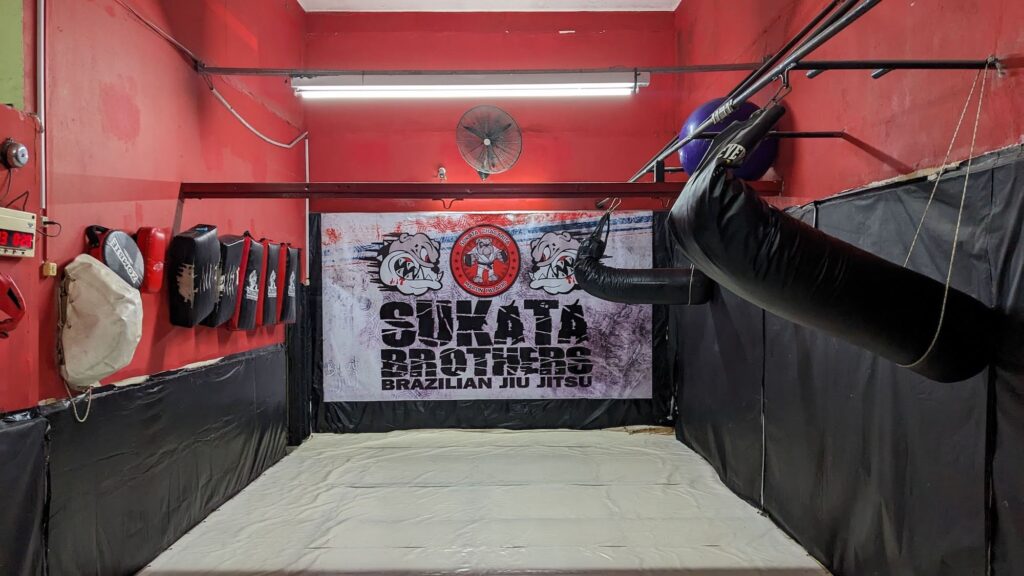
Fran’s “Vera Fight Club” is housed within Pitbull Dojo. Pitbull Dojo used to be bigger, but now is just a small area, big enough for maybe 3-4 sparring pairs, or 5-6 if they don’t move around too much. There are a few boxing bags, a squat rack, a number of Olympic bars, weights for doing deadlifts of around 150 kg but only if nobody else needs weights, and a lot of kettlebells.
The gym looks small, but what’s more important is that it’s always neat, tidy, well-kept, and fresh smelling. The smell, for me, speaks volumes for a gym. It’s so hard to keep a gym from smelling. So to keep it odour-free speaks volumes about the attentiveness of owners and managers.
There are also some showers, separate for men and women. There are some lockers but nobody uses them. The whole area is so private and intimate that the idea of theft would be anathema. One time, I lost a pair of Bluetooth earbuds, worth around US$200 (which is a monthly working class salary in Argentina). I asked on the WhatsApp group, and someone said they found them and gave them back. That’s trust.
Gym Structure / Timetable
Fran’s “Vera Fight Club” runs from 7:30 am to roughly 1:30pm. But most people are there between about 8 and 11. I tried to show up at 8 to do a bit of bag work (I did weights at another globo-style gym) and then joined the jiu jitsu class.
If you show up at 8:45, these days, you’ll be there in time for a warm up, then jiu jitsu. After that, it’s a bit hodge-podge as Fran takes time dealing with different groups of people. He’ll either be dealing with you, or instructing the class, or dealing with someone else.
The most concrete thing is that roughly between 8 and 9:30am, there’s no-gi jiu jitsu. It’s no-gi year-round at this stage. Some people stick around and put the gi on for another session at 10 or so, and some others show up for gi at that point, but that’s where I lose interest (I lost interest when I realised most people like to pull guard and to use tricky things like “reverse de la worm”).
There are also evening classes at Pitbull Dojo (not run by Fran, but by other instructors I also liked). Generally they run from 7-9pm, and are either Jiu Jitsu or Muay Thai (kickboxing + knees / elbows). It seems to be no-gi for about four months a year, and gi for about eight months a year.
Because small gyms regularly change their timetable, I’d get in touch to see what the current status is. But this is just to say that they have stuff both in the morning as well as in the evening.

Language Spoken
This is Argentina. The language spoken at the gym is Spanish!
That said, the coaches speak English if need be. Some more than others, of course. They would have little trouble coaching you in English one-on-one. The challenges are that a) all the instruction and guidance in the class is in Spanish, and b) the students aren’t all able to speak English. Though some do excellently.
Then again, what I like about martial arts training is just how much communication you can do with few words. If you have above-basic ability, and you don’t speak much Spanish, I would still go to this club.
If you’re interested in doing Jiu Jitsu and contact sports in Spanish, here’s an overview of BJJ / MMA words in Spanish.
Costs
Costs are a moving target in Argentina due to the ongoing constant devaluation of the Argentinian Peso. But loosely speaking, training three days a week at Vera Fight Club cost US$30 a month (quoting in USD, assuming that stays somewhat stable). Doing a 5-day-a-week program (including some other classes in the evenings) was $50-60 a month, depending on how much you do.
They don’t often have gear for sale (they periodically have gis, but not while I was there), so make sure you go with a mouthguard, gloves, wraps, shin guards, no-gi wear, and a gi if you plan on doing it.
Wrap up
So, after three months, how do I feel? I’ve definitely improved. In boxing, my footwork, and my understanding of range and body movement has improved dramatically. In jiu jitsu, I’ve figured out more ways doing takedowns, getting to the back, and submitting. And in strength, I’ve got to my middling strength goals (a 2 x bodyweight deadlift, a 1.5 x bodyweight squat, and a 1 x bodyweight bench). I will get stronger, but I’ve got my “working base” strength back.
As for where next — well, I’m writing this from Florence, Italy. I’ve got my Italian BJJ / MMA vocabulary ready, and I’m looking forward to a few months of training at Dog Eat Dog MMA. It’s a huge gym with a more competitive focus. Let’s see how it goes. (It went very well — Here’s my review.)

